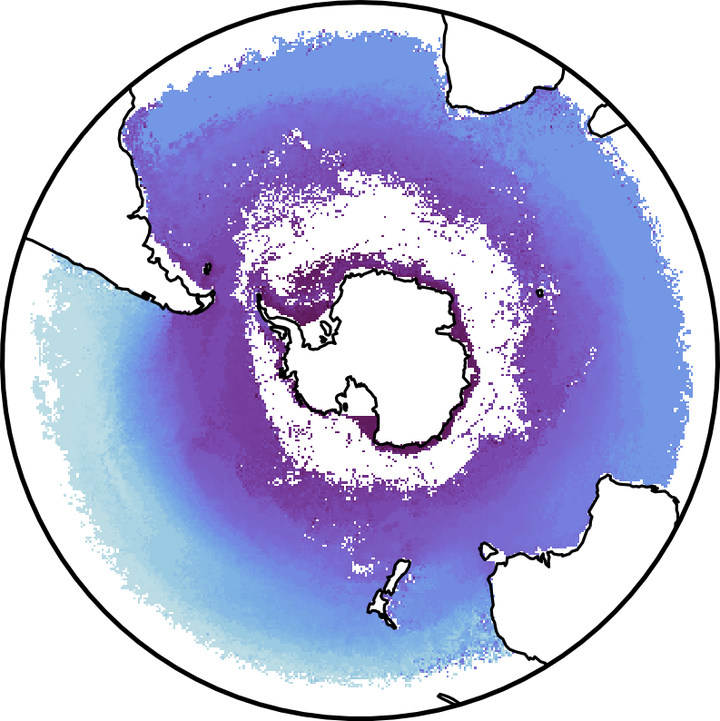Spatial and Temporal Patterns of Southern Ocean Ventilation
 Banner picture showing the final density of trajectories in the Southern Ocean.
Banner picture showing the final density of trajectories in the Southern Ocean.
Abstract
Ocean ventilation translates atmospheric forcing into the ocean interior. The Southern Ocean is an important ventilation site for heat and carbon and is likely to influence the outcome of anthropogenic climate change. We conduct an extensive backwards-in-time trajectory experiment to identify spatial and temporal patterns of ventilation. Temporally, almost all ventilation occurs between August and November. Spatially, “hotspots” of ventilation account for 60% of open-ocean ventilation on a 30 years timescale; the remaining 40% ventilates in a circumpolar pattern. The densest waters ventilate on the Antarctic shelf, primarily near the Antarctic Peninsula (40%) and the west Ross sea (20%); the remaining 40% is distributed across East Antarctica. Shelf-ventilated waters experience significant densification outside of the mixed layer.